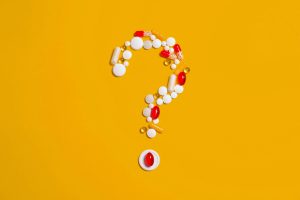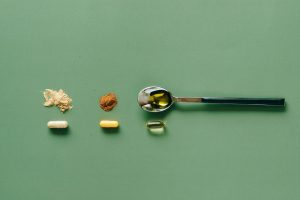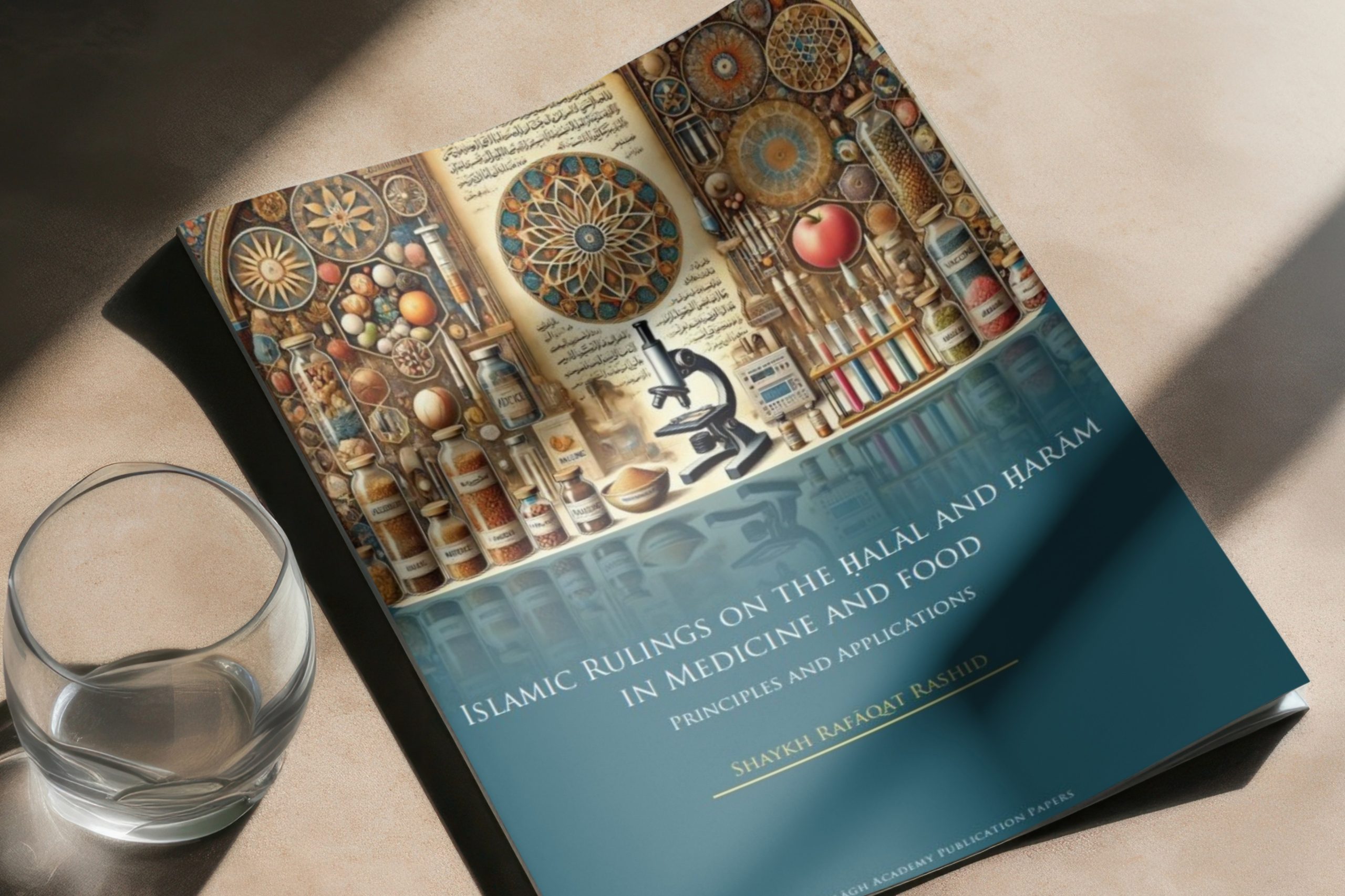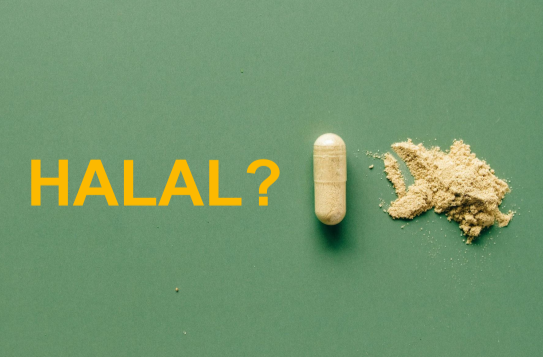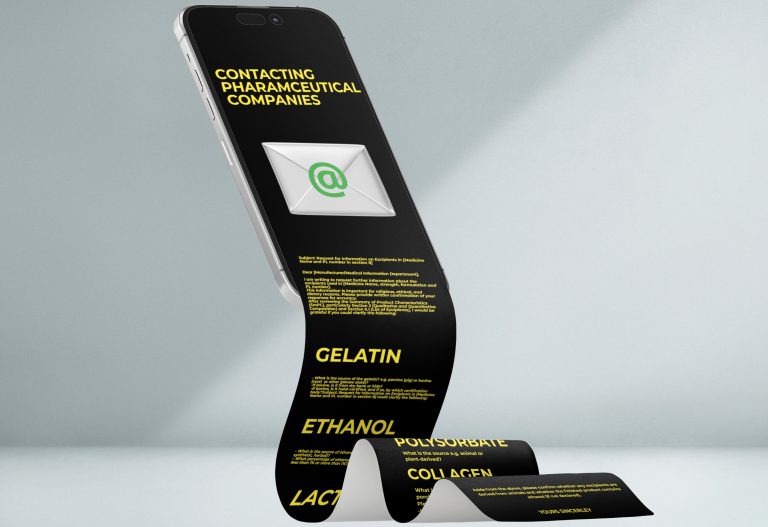Reason codes: how we apply our classifications to real medicines
Disclaimer: At HalalMed, we strive to ensure that all Islamic guidance and information regarding the permissibility of ingredients, excipients, and medical products is accurate, up to date, and based on sound scholarly sources. Our content draws upon a wide range of reliable Islamic and scientific resources, including recognised fatāwā, classical jurisprudential works, and relevant expert committee findings — many of which are referenced in the resources and books listed on our website.
We welcome discussion, feedback, and clarification on any areas that may require further verification or updating. Where new or corrected information becomes available, we are committed to reviewing and updating our materials accordingly.
Please note that the information provided by HalalMed is for educational and informational purposes only. It should not be taken as individual religious or medical advice. For personal guidance, we recommend consulting qualified scholars and healthcare professionals.
| Code | Source Type | Source Known? | Key Reason for Ruling | Scholarly Opinion | Classification |
|---|---|---|---|---|---|
| R1A | Non-animal derived, or from Islamically slaughtered animals, and free from intoxicating ethanol concentration | Known | No Confirmed Prohibited Content: To the best of our knowledge and based on current data, there is no evidence confirming the presence of any prohibited substances or impurities. | Permissible — with universal scholarly agreement | 🟩 Halal (Green) |
| Code | Source Type | Source Known? | Key Reason for Ruling | Scholarly Opinion | Classification |
|---|---|---|---|---|---|
| R2A | Bovine bone gelatin or non-gelatin | Known- bone source | Majority Opinion: The majority of scholars hold that bones do not carry flowing blood and therefore are not subject to the requirement of Islamic slaughter. As a result, they are considered inherently pure (ṭāhir) Legal Transformation (Istihāla): Not required according to the majority of scholars, as bones are already considered inherently pure (ṭāhir) | Permissible — majority scholarly opinion | 🟨 Likely Halal (Yellow) |
| R2B | Bovine hide gelatin or non-gelatin (tanned or chemically treated skin/ hide) | Known-hide source | Difference of Opinion: Majority consider pure and permissible to use (i.e. topically) but cannot be consumed. Permissibility of consumption depends on whether valid legal transformation (istihāla) occurs during the manufacturing process. Legal Transformation (Istihāla): The majority of scholars hold that valid legal transformation has not taken place. | Prohibited to consume majority scholarly opinion. Permissible to apply topically- majority scholarly opinion | 🟧 Doubtful (Amber) Topical Application: 🟨 Likely Halal(Yellow) |
| R2C | Bovine gelatin or non-gelatin (from other than bone or hide or unknown bovine source) | Known Bovine source other than bone or hide or Unknown Bovine source, but unknown whether bone, hide or other | Difference of opinion: Permissibility depends on whether valid legal transformation (istihala) occurs during the manufacturing process. If Unknown:Based on the understanding that it is bovine with unknown origin, more cautionary position is adopted (i.e., that it may be derived from other than hide and bone). Legal Transformation (Istihala): The majority of scholars hold that valid legal transformation has not taken place. | Prohibited – majority scholarly opinion | 🟧 Doubtful (Amber) |
| Code | Source Type | Source Known? | Key Reason for Ruling | Scholarly Opinion | Classification |
|---|---|---|---|---|---|
| R2E | Porcine gelatin or non-gelatin | Known porcine source | Difference of Opinion: Permissibility depends on whether valid legal transformation (istihala) occurs during the gelatin manufacturing process. Legal Transformation (Istihala): The majority of scholars hold that valid legal transformation has not taken place. | Prohibited – majority scholarly opinion | 🟧 Doubtful (Amber) |
| R2F | Porcine + bovine gelatin blend or non-gelatin | Unknown (source unclear: porcine, bovine, or both) | Difference of Opinion: Source is unclear. Permissibility depends on whether valid legal transformation (istihala) occurs during the gelatin manufacturing process. Legal Transformation (Istihala): Based on the understanding that it can be porcine, bovine hide, bone or other, and adopting the more cautionary position (i.e., that it is derived from porcine), the majority of scholars hold that valid legal transformation (istihala) has not occurred. | Prohibited – majority scholarly opinion, adopting a precautionary stance | 🟧 Doubtful (Amber) |
| R2G | Porcine-derived heparin | Known porcine source | Difference of Opinion: Extracted from pig intestines Permissibility depends on whether valid legal transformation (istihala) occurs during the manufacturing process. Legal Transformation (Istihala): The majority of scholars hold that valid legal transformation has not taken place. | Prohibited – majority scholarly opinion | 🟧 Doubtful (Amber) |
| Code | Source Type | Source Known? | Key Reason for Ruling | Scholarly Opinion | Classification |
|---|---|---|---|---|---|
| R3A | Carmine | Known Crushed cochineal insects | Presence in Final Product: Present Derived from insects, which are generally considered prohibited. Consumption is impermissible because it is derived from insects, even though considered legally pure (ṭāhir) (i.e, can be used topically). | Prohibited- majority scholarly opinion Permissible to apply topically- with universal scholarly agreement | 🟧 Doubtful (Amber) Topical Application: 🟨 Likely Halal(Yellow) |
| R3B | Carmine | Known Crushed cochineal insects | Presence in final product – Presence is uncertain from data. Adopting the more cautionary position (i.e., that it is present in final product), | Prohibited- majority scholarly opinion Permissible to apply topically- with universal scholarly agreement | 🟧 Doubtful (Amber) Topical Application: 🟨 Likely Halal(Yellow) |
| Code | Source Type | Source (Concentration) Known? | Source (Concentration) Known? | Scholarly Opinion | Classification |
|---|---|---|---|---|---|
| R4A | Ethanol not fermented from ashriba arba’a (i.e., grapes, dates or raisins) | Known Above 1% | Difference of Opinion: For ethanol content exceeding 1%, scholarly opinions differ. According to the majority of contemporary scholars (primarily Ḥanafī), ethanol not derived from grapes or dates is permissible in medications, provided it does not intoxicate in the amount consumed. Many scholars who adopt a stricter view also permit such ethanol based on the principle of public predicament and hardship (‘Umūm al-Balwa). | Permissible — majority scholarly opinion | 🟨 Likely Halal (Yellow) |
| R4B | Ethanol not fermented from ashriba arba’a (i.e., grapes, dates or raisins) | Unknown concentration | Difference of Opinion: The exact concentration is unclear; therefore, the more cautionary position of assuming it exceeds 1% is adopted. For ethanol content above 1%, scholarly opinions differ. According to the majority of contemporary scholars (primarily Ḥanafī), ethanol not derived from grapes or dates is permissible in medications, provided it does not intoxicate in the amount consumed Many scholars who adopt a stricter view also permit such ethanol based on the principle of public predicament and hardship (‘Umūm al-Balwa). | Permissible — majority scholarly opinion | 🟨 Likely Halal (Yellow) |
| R4C | Source Unknown | Unknown concentration | Common pharmaceutical ethanol (likely synthetic and very unlikely from ashriba arba’a (i.e., grapes, dates or raisins)). Due to dual uncertainty (source and concentration) therefore, the more cautionary position of assuming it exceeds 1% is adopted. According to the majority of contemporary scholars (primarily Ḥanafī), ethanol not derived from grapes or dates is permissible in medications, provided it does not intoxicate in the amount consumed | Permissible — majority scholarly opinion | 🟨 Likely Halal (Yellow) |
| R4D | Source Unknown | Known Above 1% | Common pharmaceutical ethanol (likely synthetic and very unlikely from ashriba arba’a (i.e., grapes, dates or raisins)). Due to uncertainty of source the predominant position of not being from ashriba arba’a (i.e., grapes, dates or raisins) is adopted. According to the majority of contemporary scholars (primarily Ḥanafī), ethanol not derived from grapes or dates is permissible in medications, provided it does not intoxicate in the amount consumed. | Permissible — majority scholarly opinion | 🟨 Likely Halal (Yellow) |
| R4E | Unknown | Known Below 1% | Ethanol Content <1%: Ethanol at a concentration below 1% used in manufacturing and medications is generally considered permissible, regardless of its source. | Permissible — with universal scholarly agreement | 🟩 Halal (Green) |
| R4F | Ethanol not fermented from ashriba arba’a (i.e., grapes, dates or raisins) | Known Below 1% | Ethanol Content <1%: Ethanol at a concentration below 1% used in manufacturing and medications is generally considered permissible, regardless of its source. | Permissible — with universal scholarly agreement | 🟩 Halal (Green) |
| Code | Source Type | Source Known? | Key Reason for Ruling | Scholarly Opinion | Classification |
|---|---|---|---|---|---|
| R5A | Calf Rennet: Used in the production of lactose or dairy ingredients. | Known Calf Rennet | Presence in Final Product: Present or Unclear Difference of Opinion: Rennet is dry and free from flowing blood, and is considered pure (tāhir) by the majority of scholars. However, a minority may object if traces of rennet remain in the final product. | Permissible — majority scholarly opinion | 🟨 Likely Halal (Yellow) |
| R5B | Calf Rennet: Used in the production of lactose or dairy ingredients. | Known Calf Rennet | Presence in Final Product: Not Present Calf rennet is used during the production process but is removed from the final product. | Permissible — with universal scholarly agreement | 🟩 Halal (Green) |
| R5C | Calf Rennet: Not used in the production of lactose or dairy ingredients. | Known No Calf Rennet | Presence in Final Product: Not Present Lactose is produced without the use of calf rennet and is free from concerns related to animal-derived enzymes. | Permissible — with universal scholarly agreement | 🟩 Halal (Green) |
| R5D | Calf Rennet: Unclear if used in the production of lactose or dairy ingredients. | Unknown (unclear whether Calf Rennet source) | Presence in Final Product: Unclear It is uncertain whether calf rennet is used at any stage. If used, it is generally considered pure (ṭāhir) by the majority of scholars, but a cautionary position is still recommended. | Permissible — majority scholarly opinion | 🟨 Likely Halal (Yellow) |
| Code | Source Type | Source Known? | Key Reason for Ruling | Scholarly Opinion | Classification |
|---|---|---|---|---|---|
| R6A | Chinese Hamster Ovary (CHO) Cell Line | Known – Biological Product derived from the ovary of the Chinese hamster (Cricetulus griseus). | Presence in Final Product: None CHO cells originate from a non-edible animal and thus impure and impermissible, the cells themselves are used only as living instruments to produce recombinant proteins or biologics. The final purified product contains no hamster tissue, DNA, or protein. Legal Transformation (Istihala): The majority of scholars hold that valid legal transformation of the derived biological product has taken place. | Permissible – majority scholarly stance. Since the final substance is chemically distinct and no trace of impurity remains or is negligible, the product is ruled pure and halal. Only a minority of jurists object due to the impure origin of the cell line itself transferring to the final substance. | 🟨 Likely Halal (Yellow) |
| R6B | Vero Cell Line – African Green Monkey Kidney Cells | Known-Derived in 1962 from the kidney epithelial cells of the African green monkey (Cercopithecus aethiops), Chiba University, Japan. | Presence in Final Product: Negligible or trace Monkeys are non-edible species. The Vero cell line is impure and impermissible, the cells themselves are used only as living instruments to produce recombinant proteins or biologics. The final purified product contains negligible trace. Legal Transformation (Istihāla): The majority of scholars hold that valid legal transformation of the derived biological product has taken place. | Permissible – majority scholarly stance. Since the final substance is chemically distinct and no trace of impurity remains or is negligible, the product is ruled pure and ḥalāl. Only a minority of jurists object due to the impure origin of the cell line itself transferring to the final substance. | 🟨 Likely Halal (Yellow) |
| Code | Source Type | Source Known? | Key Reason for Ruling | Scholarly Opinion | Classification |
|---|---|---|---|---|---|
| R7A | Human blood–derived excipients and ingredients (e.g., albumin, immunoglobulins, clotting factors) | Known- Extracted from pooled, screened human blood plasma donated voluntarily. Fractionated to isolate therapeutic proteins (albumin, antibodies, clotting factors). | Presence in Final Product: Present Use of human blood and its derivatives raises concern over karāmah al-insān (the inviolable dignity of the human body) and purity. Legal Transformation (Istihāla): The majority of scholars hold that valid legal transformation of the derived biological product has not taken place. | Prohibited- majority scholarly opinion Majority of modern fiqh councils (OIC, IFA, MWL) allow therapeutic use when no pure alternative exists, and the product is purified and medically required. | 🟧 Doubtful (Amber) |
| R7B | Human Diploid Cell Lines (e.g., MRC-5, WI-38) | Known – Originally derived from aborted human foetal tissue in the 1960s; maintained indefinitely in laboratory culture. | Presence in Final Product: Negligible or trace. These cell lines perpetuate human genetic material but are now several generations removed from the original tissue. The cells themselves are used only as living instruments to produce recombinant proteins or biologics. The final purified product contains negligible trace. Legal Transformation (Istihāla): The majority of scholars hold that valid legal transformation of the derived biological product has taken place. | Prohibited- majority scholarly opinion While the origin involves an impermissible act (abortion), most scholars allow therapeutic use when no pure alternative exists, and the product is medically required. | 🟧 Doubtful (Amber) |
| Code | Source Type | Source Known? | Key Reason for Ruling | Scholarly Opinion | Classification |
|---|---|---|---|---|---|
| R8A | Gelatin | Unknown– (source unclear: porcine or bovine; bone or hide) | Difference of opinion: Source is unclear. Permissibility depends on whether valid legal transformation (istihala) occurs during the gelatin manufacturing process. Legal Transformation (Istihala): Most scholars hold that because this is animal-derived gelatin — and often from hide or bones — a valid legal transformation (istihala) has not occurred. As a result, they view it as impermissible unless the source animal was halal-slaughtered or confirmed from bones. However, if the product is certified halal, this certification usually follows the minority scholarly opinion that considers animal gelatin to have undergone sufficient transformation to be pure and permissible. | Prohibited – majority scholarly opinion | 🟧 Doubtful (Amber) |
| R8B | Non-Gelatin | Unknown– (source unclear: porcine, bovine or other) | Difference of opinion: Permissibility depends on whether valid legal transformation (istihala) occurs during the manufacturing process. Legal Transformation (Istihala): For animal non-gelatin ingredients, valid legal transformation (istihala) is generally unlikely because the manufacturing process is often unclear or not fully transparent. As a result, the majority of scholars agree that a cautionary position should be taken. However, if the product is certified halal, this usually reflects the minority opinion that accepts the possibility of valid transformation or sufficient purification | Prohibited – majority scholarly opinion | 🟧 Doubtful (Amber) |
| R8C | Calf Rennet: Unclear if used in the production of lactose or dairy ingredients. | Unknown (unclear whether Calf Rennet source) | Presence in Final Product: Unclear It is uncertain whether calf rennet is used at any stage. If used, it is generally considered pure (tahir) by the majority of scholars, but a cautionary position is still recommended. However, if the product is certified halal this usually reflects the majority opinion based on caution. | Permissible — majority scholarly opinion | 🟨 Likely Halal (Yellow) |


